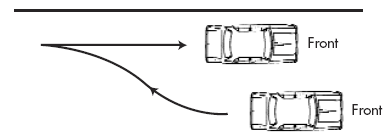|
License InformationPractical License TestIn VICTORIA you must complete a 30 minute practical driving test. The practical driving test has set performance criteria that must be met when you are driving. When you complete a driving lesson with Buzz Box driving school we will go over this practical driving test criteria with you. First there is a pre drive check in which you must be able to identify the following items
You must be able to start the engine. Please note that during the drive test you will be required to have your vehicle's headlights on low beam. During the test, the testing officer will award points for your driving performance when you demonstrate the following safe driving skills: ObservationSafe drivers are aware of other road users and road conditions at all times while driving. You should look ahead of your car and use head checks and your mirrors to maintain a high level of awareness – especially when turning at intersections, changing lanes, and entering or leaving the flow of traffic. Signal UseSafe drivers communicate their intentions to other road users. You must signal for long enough - at least three seconds to warn other drivers and road users before turning or changing lanes and for at least five seconds if you’re pulling out from the kerb. Gap SelectionWhen moving into the traffic flow, safe drivers choose safe gaps so other drivers don't have to take action to avoid a crash. They also choose the first safe gap to enter and don't cause delays to other road users. You must carefully observe the traffic and choose the first safe gap when moving into traffic from an intersection, when merging, or when moving from the kerb. Speed ChoiceSpeed choice is a key issue for safe driving - exceeding the speed limit by as little as 5 km/h increases your crash risk. Safe drivers do not exceed the speed limit Following DistanceFollowing other vehicles too closely is a significant cause of crashes – especially for young drivers. Safe drivers leave sufficient distance between their car and vehicles in front so there’s time to deal with unexpected events. You must leave at least 2 seconds between you and any vehicle ahead - and longer in poor driving conditions. You should use the same following distances when changing lanes and merging. Lateral PositionSafe drivers choose the best lane to drive in, steer a smooth path and stay completely within the lane. They keep a safe distance between their car and other road users, including parked cars. During the test, you must choose the correct lane and position your car safely within the lane at all times. Stop PositionWhen you are required to stop - for example at Stop signs, traffic lights, and crossings - you must stop the car in the correct position. Safe drivers stop close to (but not over) the Stop line. This ensures the safety of other road users and gives the driver the best opportunity to detect potential hazards and to select a safe gap before moving off. ControlSafe drivers are in full control of the vehicle at all times. To demonstrate this you must accelerate and brake smoothly during all manoeuvres, avoid stalling the engine, and if you are driving a manual use the clutch and gears smoothly. Low Speed ManoeuvringIn a VICROADS practical license test you will be asked to demonstrate either a Reverse Parallel Park or a Three Point Turn. Reverse Parallel ParkYou will be asked to pull up next to a legally parked vehicle and reverse into the space behind that vehicle. You Must:
Three Point TurnYou will be asked to make a three point turn (turn your car around) on a road which is not as wide as your car’s turning circle. You should complete this manoeuvre in three movements. You Must:
If you do any of these things during the low speed manoeuvre you will fail:
More information can be found on the VICROADS Getting Your P's web page. |






